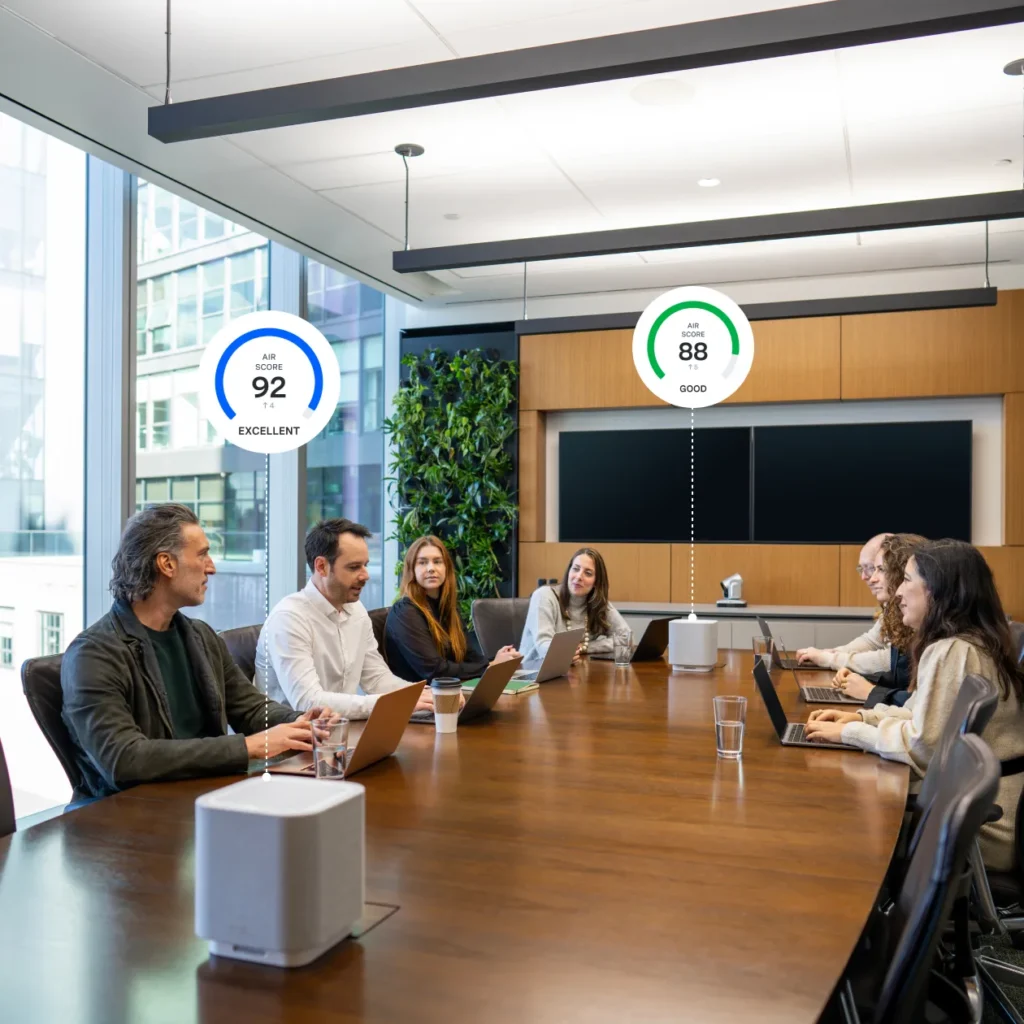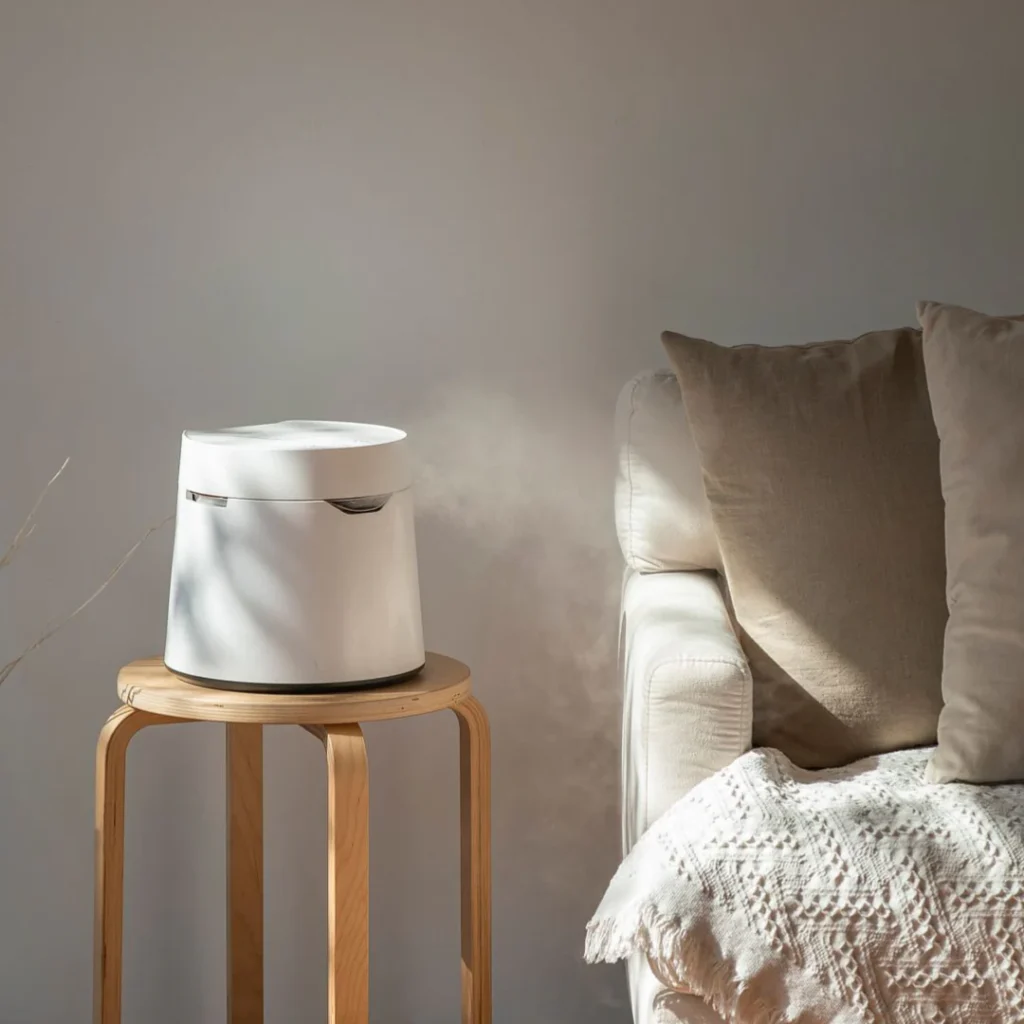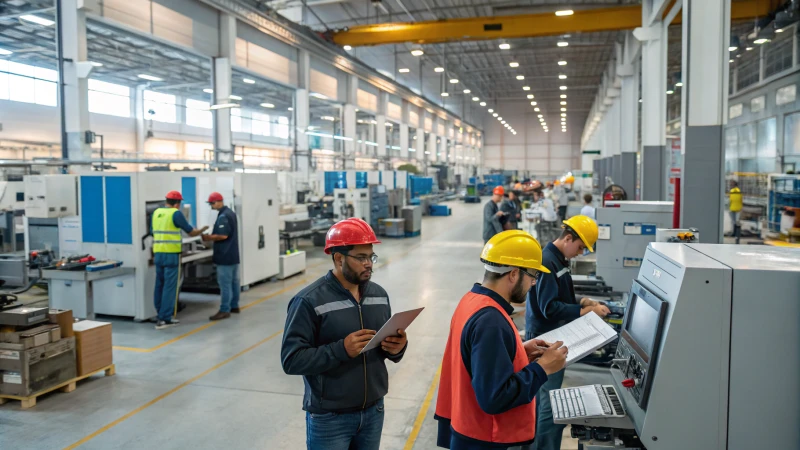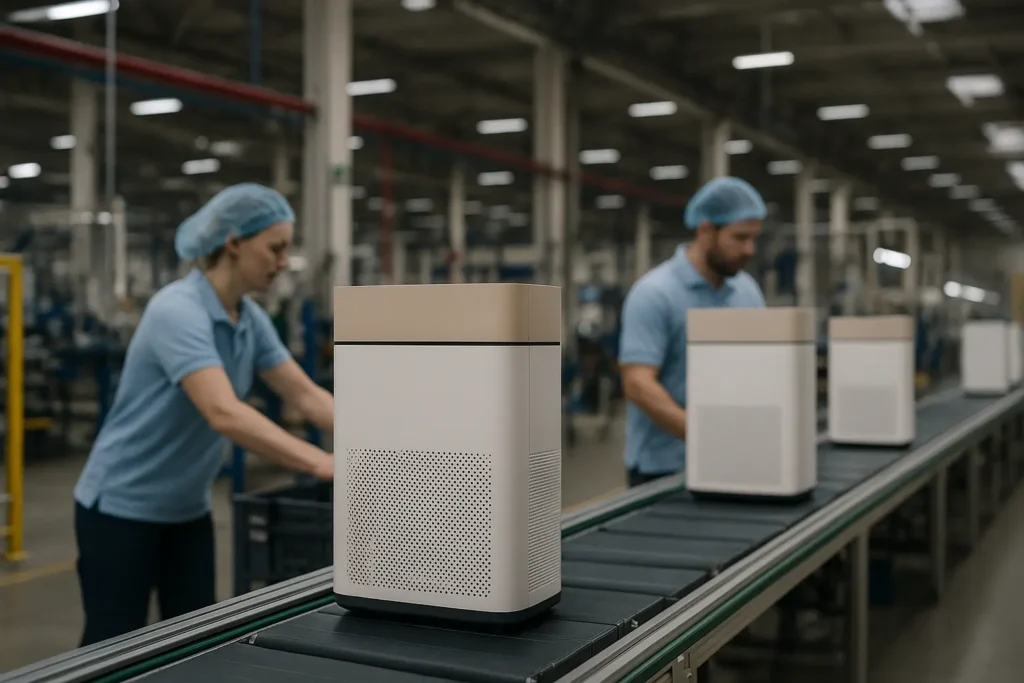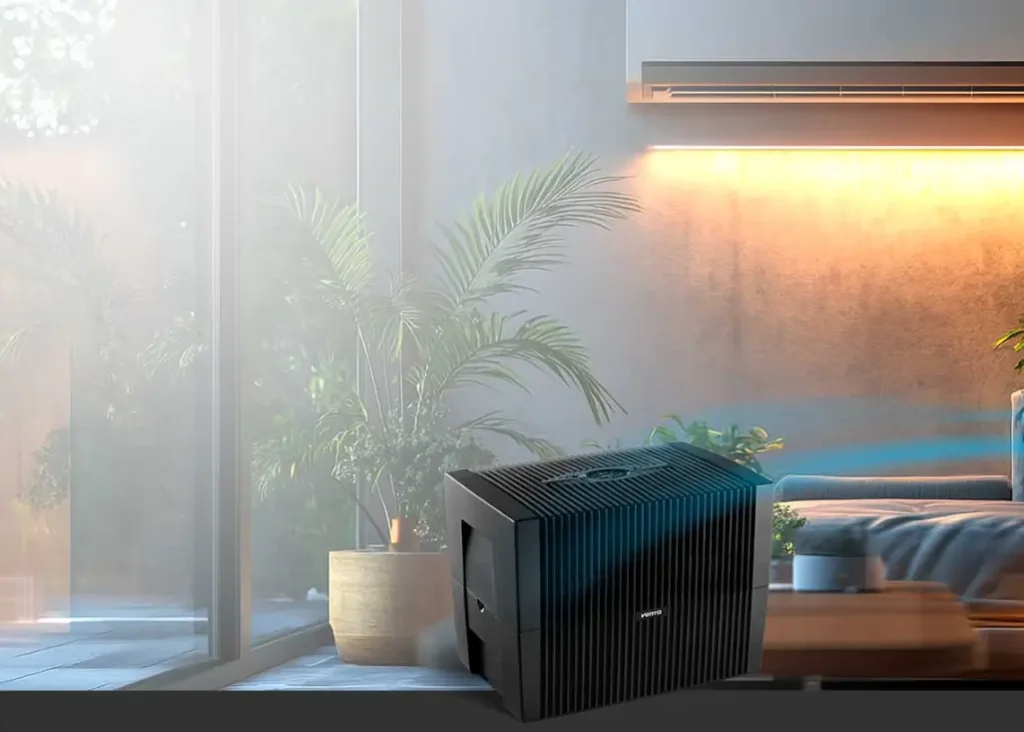
Encontrar un camino a través de las detalladas normas de la OSHA para los purificadores de aire de las empresas parece como resolver un gran rompecabezas.
Para garantizar que los purificadores de aire cumplen las normas OSHA para proyectos comerciales, es esencial evaluar sus indicadores de rendimiento, requisitos de seguridad y procedimientos de mantenimiento. Esto incluye garantizar que la eficacia de purificación, los niveles de ruido y las características de seguridad cumplen la normativa nacional.
Esto proporciona una comprensión básica. Estudie más a fondo cada una de las partes para obtener toda la claridad necesaria para alcanzar la conformidad total. Profundice para encontrar acciones detalladas, prácticas recomendadas y opiniones de expertos que probablemente faciliten su camino hacia el cumplimiento.
Los purificadores de aire deben tener filtros HEPA para cumplir las normas de la OSHA.Falso
La OSHA no pide directamente filtros HEPA; se centra en la limpieza general del aire.
¿Cuáles son los principales indicadores de rendimiento de los purificadores de aire comerciales?
Conocer las medidas importantes de los purificadores de aire comerciales es vital para lograr una excelente calidad del aire.
Los principales indicadores de rendimiento de los purificadores de aire comerciales son la eficacia de purificación, los niveles de ruido y el volumen de aire. Estos indicadores influyen directamente en la eficacia de los purificadores de aire para mejorar la calidad del aire en entornos comerciales.

Comprender la eficacia de la depuración
La eficacia de la depuración es uno de los indicadores de resultados1 para purificadores de aire comerciales. Se refiere a la capacidad del dispositivo para eliminar contaminantes del aire, como polvo, polen y otras partículas suspendidas en el aire. Una alta eficacia de purificación garantiza que el purificador de aire reduzca eficazmente la contaminación del aire interior, lo que es vital en entornos comerciales donde la calidad del aire puede afectar significativamente a la salud y la productividad.
Cómo medirlo:
- Tasa de entrega de aire limpio (CADR): Esta métrica indica el volumen de aire filtrado suministrado por el purificador, medido en pies cúbicos por minuto (CFM). Mayor CADR sugieren un mejor rendimiento.
- Tecnología de filtrado: El tipo de filtros utilizados, como los HEPA o los de carbón activado, también afecta a la eficacia.
Evaluación de los niveles de ruido
Los niveles de ruido son una consideración importante, sobre todo en entornos como oficinas o restaurantes, donde un ruido excesivo puede resultar molesto. Los purificadores de aire comerciales deben mantener un equilibrio entre rendimiento y silencio de funcionamiento.
Factores que influyen en los niveles de ruido:
- Velocidad del ventilador: Las velocidades más altas suelen ser más ruidosas. Busque modelos con velocidad variable.
- Diseño: El diseño general y la calidad de construcción también pueden contribuir a reducir el ruido.
Evaluación de la capacidad de volumen de aire
La capacidad de volumen de aire, a menudo vinculada a la CADRindica la cantidad de aire que el purificador puede procesar en un tiempo determinado. Esto es especialmente importante en espacios grandes, donde se necesita una mayor capacidad para garantizar que todas las zonas se purifican adecuadamente.
| Modelo de purificador | CADR (CFM) | Tamaño recomendado de la habitación |
|---|---|---|
| Modelo A | 300 | Hasta 400 pies cuadrados |
| Modelo B | 450 | Hasta 600 pies cuadrados |
Importancia del mantenimiento periódico
Aunque no es un indicador directo del rendimiento, el mantenimiento regular garantiza que los purificadores de aire sigan funcionando con la máxima eficacia. Esto incluye cambiar los filtros y limpiar los componentes según las directrices del fabricante.
Para una comprensión global de cómo interactúan estos indicadores y sus implicaciones sobre calidad del aire2Considere la posibilidad de consultar opiniones de expertos y realizar comparaciones detalladas de productos.
Los filtros HEPA son los más eficaces para purificar el aire.Verdadero
Los filtros HEPA atrapan el 99,97% de las partículas, elevando la calidad del aire.
Una mayor velocidad del ventilador reduce los niveles de ruido de los purificadores de aire.Falso
Las mayores velocidades del ventilador aumentan el ruido; los ajustes diferentes lo disminuyen.
¿Cómo influyen los requisitos de seguridad en el diseño de los purificadores de aire?
Las normas de seguridad afectan en gran medida al modo en que se crean los purificadores de aire. Esto mantiene seguros a los usuarios y garantiza la fiabilidad del producto.
Los requisitos de seguridad influyen en el diseño de los purificadores de aire al dictar la seguridad eléctrica, la elección de materiales y las características operativas para evitar accidentes y garantizar el cumplimiento de las normas nacionales.
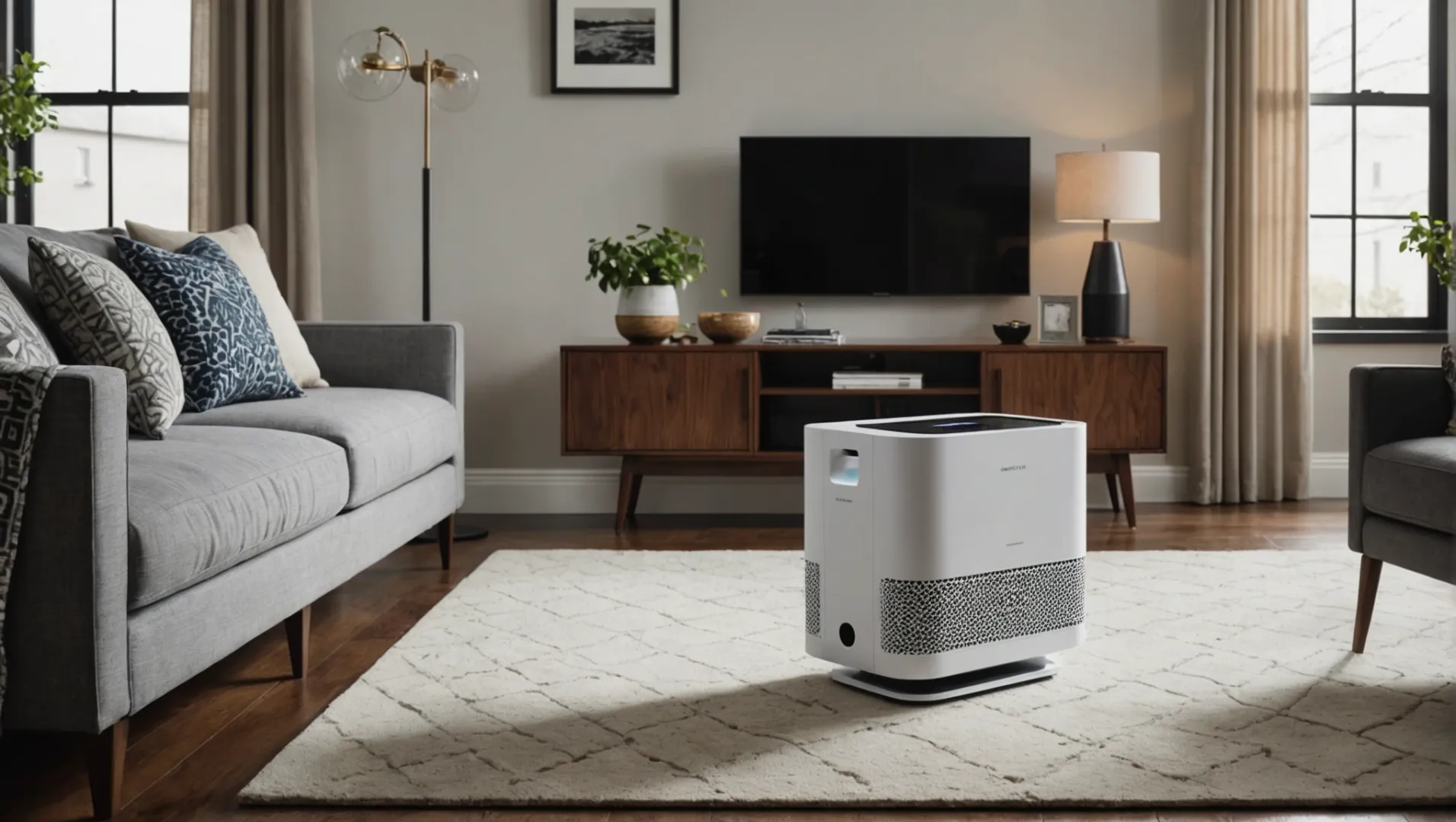
Comprender la seguridad eléctrica
La seguridad eléctrica es muy importante en diseño de purificadores de aire3. Los purificadores de aire funcionan sin parar, a menudo durante semanas, lo que requiere componentes eléctricos resistentes. Los diseñadores deben aislar y conectar a tierra todos los circuitos eléctricos para evitar cortocircuitos e incendios. El cumplimiento de normas de seguridad nacionales e internacionales como la IEC 60335 demuestra a los usuarios que el producto es fiable.
Selección de materiales y durabilidad
Los materiales de los purificadores de aire son esenciales para la seguridad. Los fabricantes necesitan materiales que sean fuertes y resistentes al fuego. Así se reducen los riesgos de incendio, sobre todo en lugares donde las máquinas trabajan todo el día. Cada vez más diseñadores eligen materiales ecológicos para cumplir los objetivos de sostenibilidad mundial.
Prevención de riesgos de explosión
En algunos lugares, las explosiones de gases o compuestos inestables son muy preocupantes. Los purificadores de aire para estas zonas tienen filtros y sensores especiales para detectar y reducir estos riesgos. Los diseños a prueba de explosiones siguen normas como ATEX en Europa y NEC en EE.UU.
Cumplimiento de la normativa y pruebas
Los diseños de purificadores de aire pasan estrictas pruebas antes de llegar al mercado. Las pruebas comprueban el ruido, la eficiencia y los aspectos de seguridad. Los equipos de diseño suelen trabajar con laboratorios externos para confirmar normas como las marcas UL, CE o CSA. Comprender los cambios normativos ayuda al cumplimiento continuo.
Funciones de seguridad para el usuario
Los purificadores de aire modernos poseen muchas funciones de seguridad para el usuario. Éstas pueden incluir desconexión automática por sobrecalentamiento o filtros obstruidos, bloqueo para niños y sencillas alertas para el mantenimiento. Cada característica intenta mejorar la interacción con el usuario y reducir los posibles peligros.
Al centrarse en estas necesidades de seguridad, los fabricantes generan confianza entre los consumidores y fabrican productos fiables y útiles. Estos elementos son clave en el proceso de diseño y dan forma al desarrollo de los purificadores de aire.
La seguridad eléctrica es crucial en el diseño de purificadores de aire.Verdadero
La seguridad eléctrica ayuda a que los purificadores de aire funcionen bien, deteniendo los incendios.
Todos los purificadores de aire utilizan materiales ecológicos.Falso
Aunque algunos utilizan materiales ecológicos, no todos los purificadores de aire lo hacen.
¿Qué prácticas de mantenimiento garantizan el cumplimiento de las normas OSHA?
El cumplimiento de las normas OSHA exige un mantenimiento cuidadoso de los purificadores de aire comerciales, protegiendo tanto el rendimiento como la seguridad.
Las prácticas de mantenimiento regular de los purificadores de aire deben incluir sustituciones de filtros, inspecciones del sistema y evaluaciones del rendimiento para cumplir las normas de la OSHA. Estas prácticas ayudan a mantener la eficiencia operativa, garantizar que las características de seguridad estén intactas y evitar cualquier incumplimiento de la normativa.
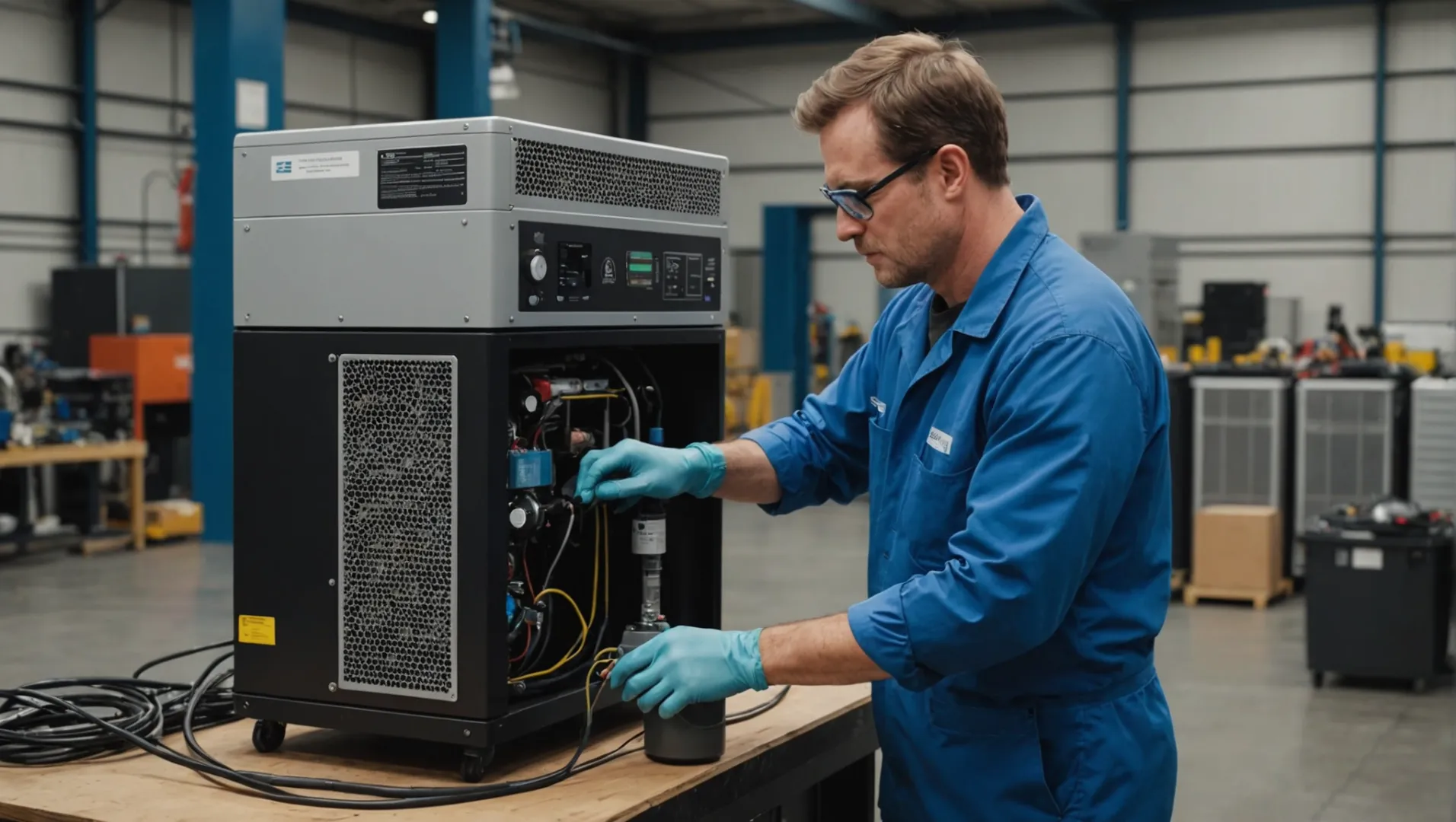
Comprender las normas OSHA para el cuidado de los purificadores de aire
El cuidado de los purificadores de aire en lugares de trabajo exige seguir las normas de la Administración de Seguridad y Salud en el Trabajo (OSHA). Estas directrices describen las prácticas esenciales para garantizar la seguridad y un rendimiento óptimo.
-
Cambios regulares del filtro: Los filtros deben revisarse y cambiarse siguiendo las recomendaciones del fabricante. Esto mantiene el aire limpio y garantiza que el purificador funcione con eficacia. Los filtros sucios o bloqueados pueden sobrecargar el sistema y poner en peligro la seguridad.
-
Comprobaciones del sistema: Las revisiones periódicas son importantes. Inspeccione los componentes eléctricos para evitar riesgos de incendio y asegurarse de que todas las piezas funcionan correctamente. Estas comprobaciones ayudan a identificar el desgaste antes de que se conviertan en problemas importantes.
-
Controles de rendimiento: Las evaluaciones periódicas del rendimiento ayudan a mantener la eficacia de la purificación de acuerdo con las normas de la OSHA. Evalúe parámetros como el flujo de aire, la velocidad de limpieza y los niveles de ruido para determinar si el sistema está realizando su trabajo con eficacia.
Documentación y conformidad
Mantener registros exhaustivos de todas las actividades de mantenimiento es crucial para demostrar el cumplimiento.
-
Notas de mantenimiento: Documente todas las actividades de mantenimiento, como los cambios de filtros, los resultados de las inspecciones y las reparaciones realizadas. Esta documentación suele exigirse durante las auditorías de la OSHA.
-
Formación del personal: La formación del personal que trabaja con purificadores de aire también es muy importante. La formación debe abarcar los procedimientos de manipulación segura, los protocolos de seguridad y las medidas de emergencia.
Errores comunes de cuidado y cómo evitarlos
Incluso con un plan de mantenimiento sólido, algunos errores pueden poner en peligro el cumplimiento de la normativa:
-
Ignorar los pequeños problemas: Los problemas menores, como ruidos extraños o ligeras caídas en el rendimiento, deben abordarse con prontitud. Solucionarlos a tiempo evita que surjan problemas mayores.
-
Faltan las instrucciones del fabricante: Cada purificador puede tener requisitos de mantenimiento específicos que deben seguirse. Comprender las instrucciones del fabricante4 es clave para el cumplimiento.
Siguiendo estos métodos de cuidado y evitando errores comunes, las empresas pueden mantener sus purificadores de aire en línea con las normas de la OSHA, garantizando que funcionen de forma segura y eficiente en sus espacios comerciales.
La sustitución periódica de los filtros es obligatoria para cumplir la normativa OSHA.Verdadero
Las normas OSHA requieren un mantenimiento frecuente, como el cambio de filtros, para mayor seguridad.
Ignorar los pequeños problemas de los purificadores de aire no afecta al cumplimiento de la normativa.Falso
Ignorar los pequeños problemas posiblemente crezca y resulte en el incumplimiento de las normas de la OSHA.
¿Existen errores comunes que deban evitarse para cumplir las normas de calidad del aire de la OSHA?
Cumplir las normas de calidad del aire de la OSHA puede resultar difícil. Manténgase alejado de estos errores para encontrar el éxito.
Los escollos más comunes a la hora de cumplir las normas de calidad del aire de la OSHA son la negligencia en el mantenimiento periódico, la incomprensión de la normativa y la supervisión inadecuada del rendimiento. Garantizar el cumplimiento implica una gestión proactiva, el cumplimiento de directrices actualizadas y la contratación de personal competente.
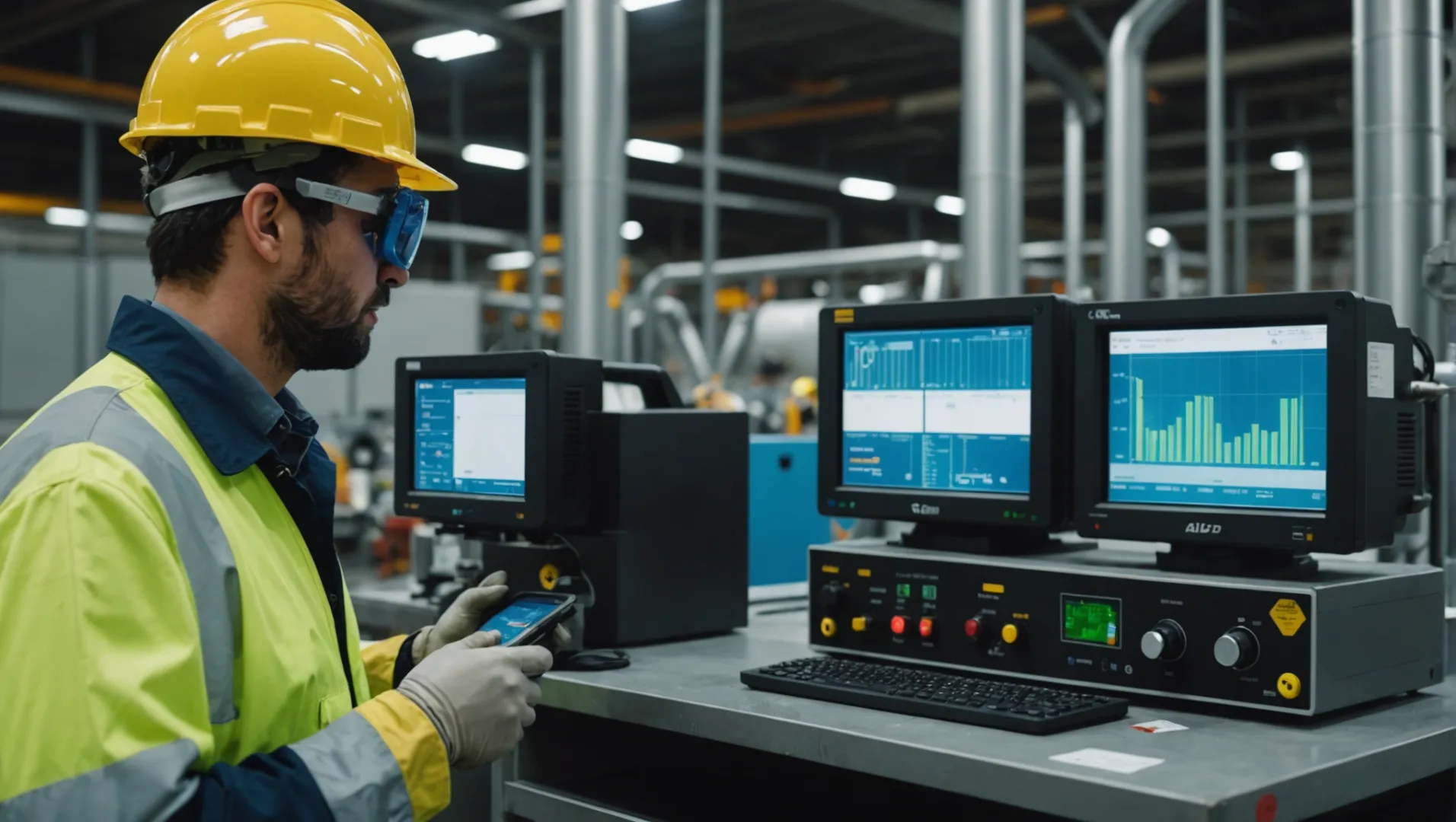
Malinterpretar las normas de la OSHA
Uno de los escollos más comunes a los que se enfrentan las empresas es la incomprensión de Normativa OSHA5. Las empresas suelen dar por sentado que todos los purificadores de aire cumplen automáticamente estas normas, lo cual no es cierto. Es fundamental conocer a fondo los requisitos específicos, como los límites de exposición permisibles (PEL) y las prácticas de seguridad recomendadas, para seleccionar el equipo adecuado.
Ignorar el mantenimiento periódico
Ignorar el mantenimiento periódico es otro problema común. Los purificadores de aire necesitan un cuidado regular para seguir siendo eficaces y seguros. Este proceso incluye el cambio de filtros, la limpieza de piezas y la realización de inspecciones. No seguir un programa puede causar un menor rendimiento y posibles problemas.
| Tarea de mantenimiento | Frecuencia |
|---|---|
| Cambio de filtro | Cada 3-6 meses |
| Limpieza de piezas | Mensualmente |
| Comprobaciones del sistema | Trimestral |
Controles de rendimiento deficientes
Comprobar el funcionamiento de los purificadores de aire es fundamental para cumplir las normas de la OSHA. Algunas empresas se saltan este paso, lo que provoca problemas que no se detectan a tiempo. Realizar pruebas periódicas, como comprobaciones de la calidad del aire, puede ayudar a detectar problemas a tiempo.
Contratación de trabajadores no cualificados
Por último, el empleo de trabajadores sin la formación adecuada puede perjudicar el cumplimiento de las normas. Los trabajadores que se ocupan de los sistemas de calidad del aire deben estar formados y conocer las normas de la OSHA. Invertir en programas de formación6 probablemente mejore los resultados de cumplimiento.
Al comprender estos errores comunes y utilizar estrategias para evitarlos, las empresas pueden garantizar que sus sistemas de calidad del aire sigan cumpliendo las normas de la OSHA.
El mantenimiento regular es innecesario para el cumplimiento de la OSHA.Falso
Ignorar el mantenimiento probablemente redunde en un menor funcionamiento y en el incumplimiento de las normas.
Todos los purificadores de aire cumplen automáticamente las normas OSHA.Falso
Creer que todas las depuradoras siguen unas normas es un error típico.
Conclusión
Seguir las normas de la OSHA crea un lugar de trabajo más seguro. Concéntrese en el rendimiento, la seguridad y el mantenimiento para mejorar la calidad del aire y cumplir las normas. Manténgase al día y tome la iniciativa.
-
Descubra métodos para medir con precisión la eficacia de la purificación: 1. Monitor de calidad del aire. Un monitor de la calidad del aire interior es una forma sencilla de verificar que el purificador de aire está haciendo bien su trabajo. También es un ... ↩
-
Sepa por qué es esencial mantener una calidad del aire óptima.: Esta guía pretende ayudar a las personas que trabajan en edificios de oficinas a conocer los factores que contribuyen a los problemas de calidad y confort del aire interior. ↩
-
Descubra cómo las normas de seguridad eléctrica garantizan un funcionamiento fiable de los purificadores de aire..: Aunque la mayoría de los aparatos eléctricos están diseñados pensando en la seguridad del usuario, algunos pueden degradar involuntariamente la calidad del aire interior. Un clásico ... ↩
-
Conozca los pasos precisos de mantenimiento directamente de los fabricantes para garantizar el cumplimiento.: Los filtros de aire de los edificios comerciales y públicos deben inspeccionarse periódicamente para detectar signos de daños, suciedad y cierres herméticos. La zona alrededor del ... ↩
-
Entender las normas clave de OSHA sobre calidad del aire para su cumplimiento.: La ventilación correcta y el cuidado del edificio pueden prevenir y solucionar problemas de IAQ. Aunque OSHA no tiene normas IAQ, sí tiene normas sobre ventilación... ↩
-
Descubra programas de formación eficaces para mejorar las habilidades de cumplimiento de OSHA ..: Proveedores de formación en línea autorizados por OSHA - 360Training (OSHAcampus) - AdvanceOnline - CareerSafe (Youth Focus) - ClickSafety - HSI (Summit Training Source) ... ↩


